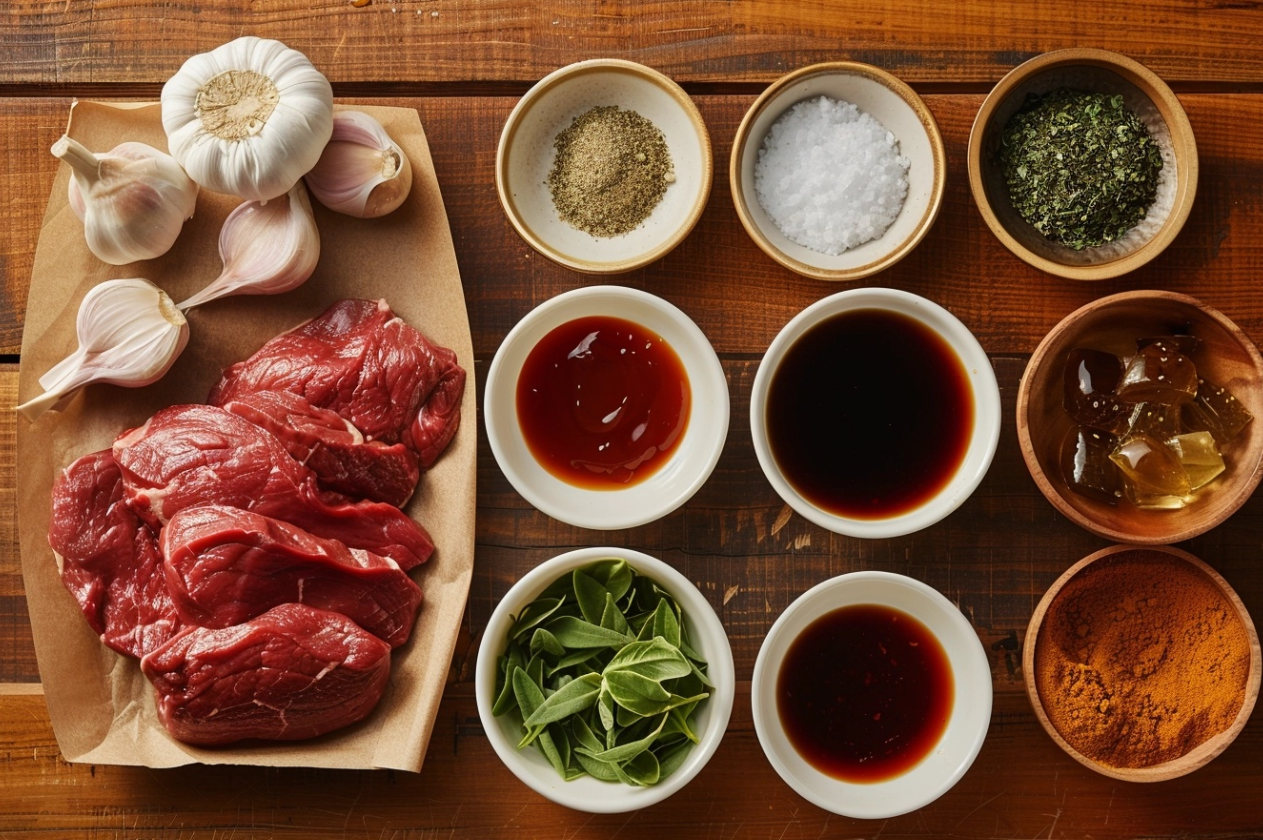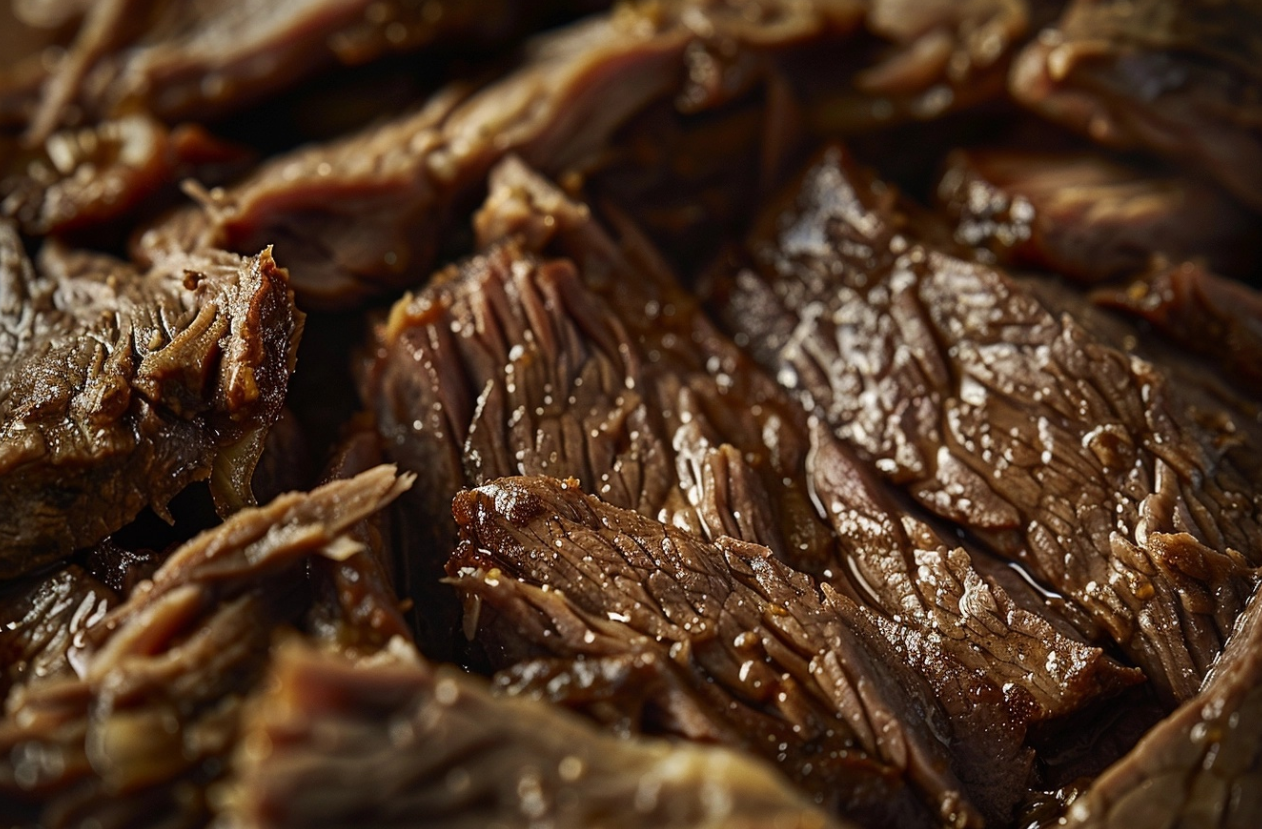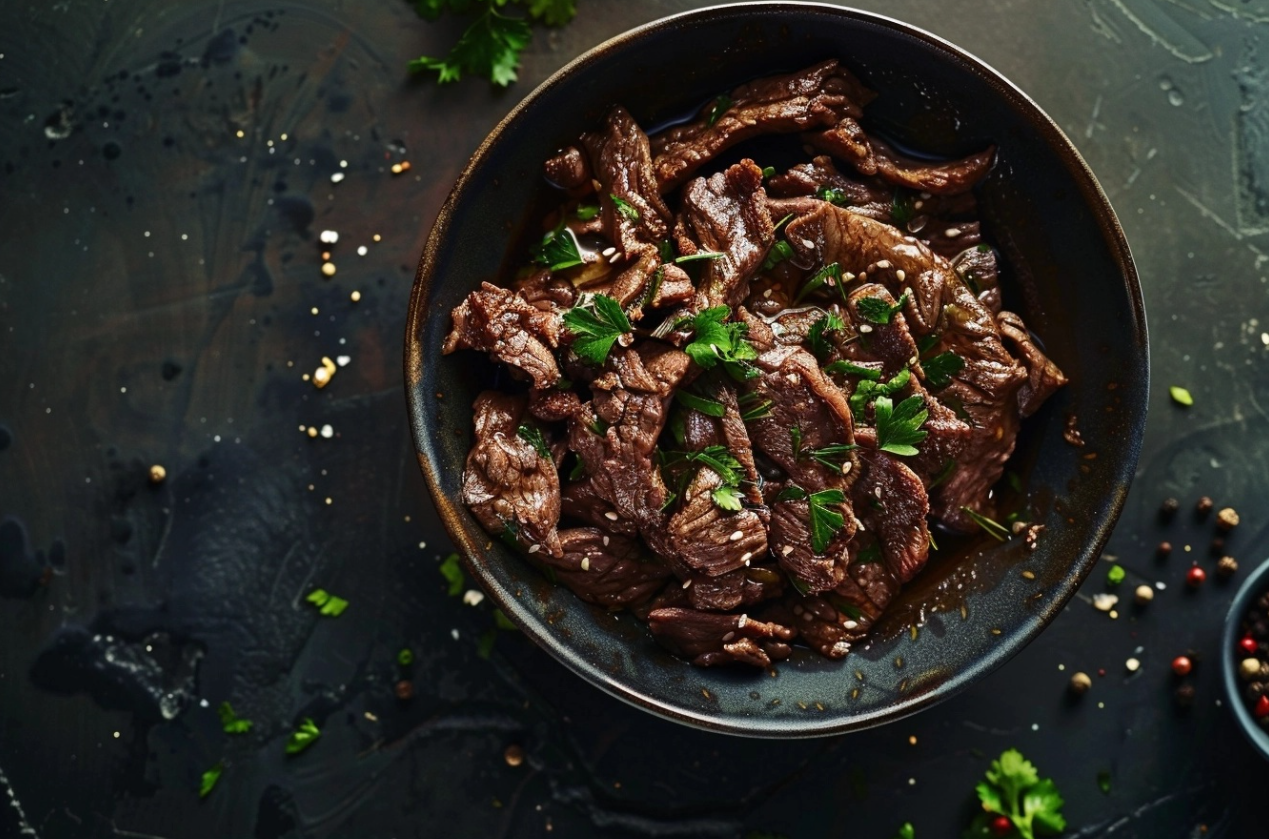Introduction to Shredded Beef Recipes
What exactly constitutes shredded beef?
Shredded beef recipes, a culinary chameleon, transforms into a myriad of delectable creations across the globe. This tender, flavorful meat is created by slow-cooking beef until it can be easily pulled apart. Embraced for its robust flavor and texture, shredded beef reigns supreme in tacos, sandwiches, and salads alike.
History and Origin
The origins of shredded beef recipes can be traced back to different cultures, each with its own unique take on this delicious meat. Within Mexican culinary heritage, shredded beef, known as “ropa vieja,” boasts a legacy spanning generations. Similarly, in American barbecue culture, slow-cooked beef is a staple. To explore traditional Mexican shredded beef techniques, check out this Authentic Mexican Shredded Beef Recipe.
Purpose of Shredded Beef in Cooking
Shredded beef serves multiple purposes in cooking, making it a favorite for home cooks and chefs alike. From hearty stews to delicate salads, shredded beef effortlessly adapts, showcasing its culinary versatility. Additionally, it’s an excellent way to use tougher cuts of beef, transforming them into a tender and flavorful component of any meal.
Shredded beef’s knack for soaking up flavors is a key driver behind its widespread acclaim. When cooked with various spices and sauces, the beef takes on the essence of the ingredients, enhancing the overall taste of the dish. For those interested in slow-cooker methods, this Slow Cooker Shredded Beef Recipe offers a comprehensive guide.
A meal prep gem, shredded beef streamlines kitchen chaos with its convenient nature. With the ability to be batch-cooked and stored, shredded beef emerges as a time-saving ally in bustling households. Whether you’re preparing a quick weeknight dinner or planning a big family gathering, shredded beef can be the star of your menu.
Beyond mere cooking technique, shredded beef embodies a rich culinary heritage interwoven with diverse cultures. Its chameleon-like nature ensures shredded beef earns its spot as a kitchen essential.
Advanced Techniques for Shredded Beef Recipes
Flavor Enhancements
Elevating the flavor of shredded beef involves more than just seasoning. One effective method is marinating the beef. Combine olive oil, lime juice, garlic, and your choice of spices to create a robust marinade. Allow the beef to marinate in the blend for a minimum of 4 hours, or overnight to enhance its flavors further.
An alternative method to intensify flavor involves integrating spices and herbs while cooking. Elevate taste with aromatic undertones from bay leaves, thyme, and rosemary. Don’t forget to adjust the seasoning with salt and pepper throughout the cooking process to ensure a well-balanced flavor.
Cooking Methods
Different cooking methods can yield unique textures and flavors in shredded beef. Here are three popular methods:
- Slow Cooking: The slow cooking technique entails simmering the beef over low heat for an extended duration. It’s perfect for achieving tender, melt-in-your-mouth shredded beef. Place the seasoned beef in a slow cooker with broth and vegetables, and let it cook on low for 6-8 hours.
- Pressure Cooking: If you’re short on time, a pressure cooker can produce similar results in a fraction of the time. Cook the beef on high pressure for about 60 minutes, then allow a natural release of pressure before shredding.
- Oven Baking: When utilizing the oven for baking, attain a crispy outer layer while preserving a soft inner texture. Bake the seasoned beef in a covered dish at 325°F for 3-4 hours, adding broth or water to keep it moist.
Each method has its pros and cons. Slow cooking offers convenience and consistency, pressure cooking saves time, and oven baking adds a unique texture. xplore these methods to discover your favored approach to crafting shredded beef.
Innovative Recipes
Shredded beef can be a star ingredient in many creative dishes. Here are some innovative recipes to try:
- Beef Empanadas: Use shredded beef as a filling for empanadas. Combine it with onions, peppers, and spices, then bake until golden brown.
- Beef Enchiladas: Crafting Beef Enchiladas involves rolling shredded beef in tortillas, smothering with enchilada sauce and cheese, then baking until golden and bubbling. Pair with rice and beans to complete the meal.
- Asian-Inspired Beef Bowls: Combine shredded beef with soy sauce, ginger, and garlic. Serve over rice with steamed vegetables and a sprinkle of sesame seeds.
These recipes not only display the adaptability of shredded beef but also illuminate its ability to harmonize with diverse culinary traditions. Whether you’re making a traditional dish or trying something new, shredded beef can add a rich and savory element to your meal.
In conclusion, exploring advanced techniques for shredded beef can elevate your cooking and introduce you to new flavors and textures. By experimenting with different methods and recipes, you can discover exciting ways to enjoy this delicious ingredient. From marination to inventive culinary creations, the potential for shredded beef knows no bounds. Discover more advanced recipes
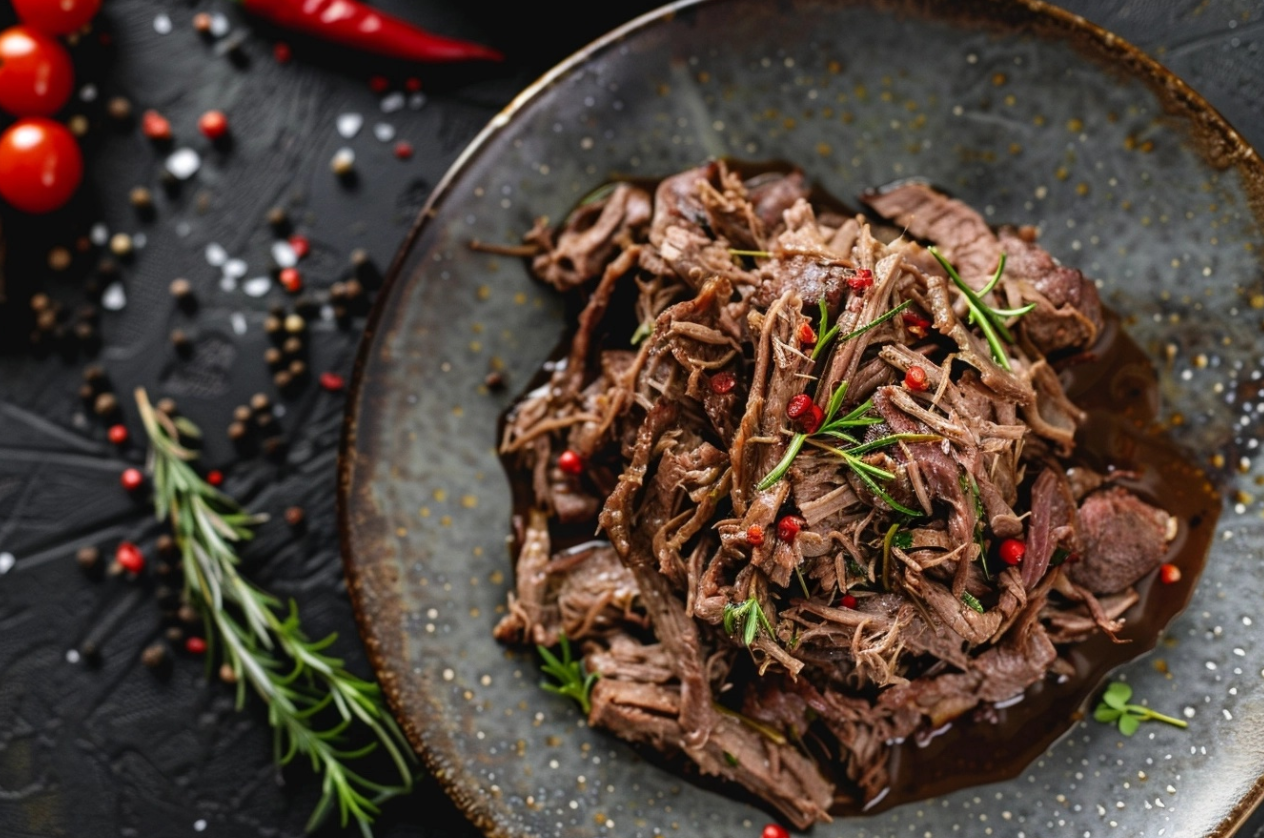
Tips for Maintaining and Storing
Storing Shredded Beef Recipes
Proper storage of shredded beef is essential to maintain its flavor and texture. Post-cooking, allow the beef to reach room temperature. Place it into an airtight container or robust freezer bags, expelling excess air to prevent freezer burn.
In the refrigerator, shredded beef can last for up to four days. If you plan to store it longer, freezing is a better option. When frozen, shredded beef can remain fresh for up to three months. Date your containers to monitor storage duration.
Reheating Techniques
Proper reheating techniques are essential for retaining the moisture and flavor of shredded beef. Here are some effective methods:
- Stovetop: Place the beef in a skillet over medium heat. Introduce a splash of beef broth or water to maintain moisture while reheating. Stir intermittently until thoroughly warmed.
- Microwave: For microwave reheating, utilize a microwave-safe dish, covering with a lid or microwave-safe wrap. Heat in one-minute intervals on medium power, stirring between each cycle until heated evenly.
- Oven: Rephrase this sentence in a new way that has never been writen before:
Arrange the beef in a dish suitable for oven use, pour in a bit of beef broth, and then securely cover with foil. Warm the dish for approximately 20 minutes, or until thoroughly heated.
Steer clear of excessive heat, as it has the tendency to render the beef parched and unyielding. Consistently verify the inner warmth, guaranteeing it reaches the requisite level of heat to ensure consumption safety.
Maintaining Quality
To keep your shredded beef tender and juicy, follow these tips:
- Use Moisture-Rich Cooking Methods: Slow cooking and pressure cooking are ideal for retaining moisture. Through these techniques, the connective tissues are dismantled, yielding meat that is tender in texture.
- Avoid Overcooking: Overcooking can dry out the beef. Keep an eye on cooking times and check for doneness regularly.
- Break Apart While Still Warm: The act of breaking down the beef while it retains warmth facilitates effortless separation. Additionally, this process enables the meat to soak up a portion of its own cooking juices, thereby amplifying its flavor profile.
Preventing dryness and texture loss is key to enjoying your shredded beef in various dishes. Ensure the beef is consistently managed and stored with care, maintaining both its delectable taste and safety for consumption.
In conclusion, proper maintenance and storage of shredded beef are essential to preserving its quality and taste. With adherence to these guidelines, relish the succulent, flavorful essence of beef in your meals at any given moment. Whether you’re reheating leftovers or storing a large batch for future use, these techniques will help keep your shredded beef at its best.
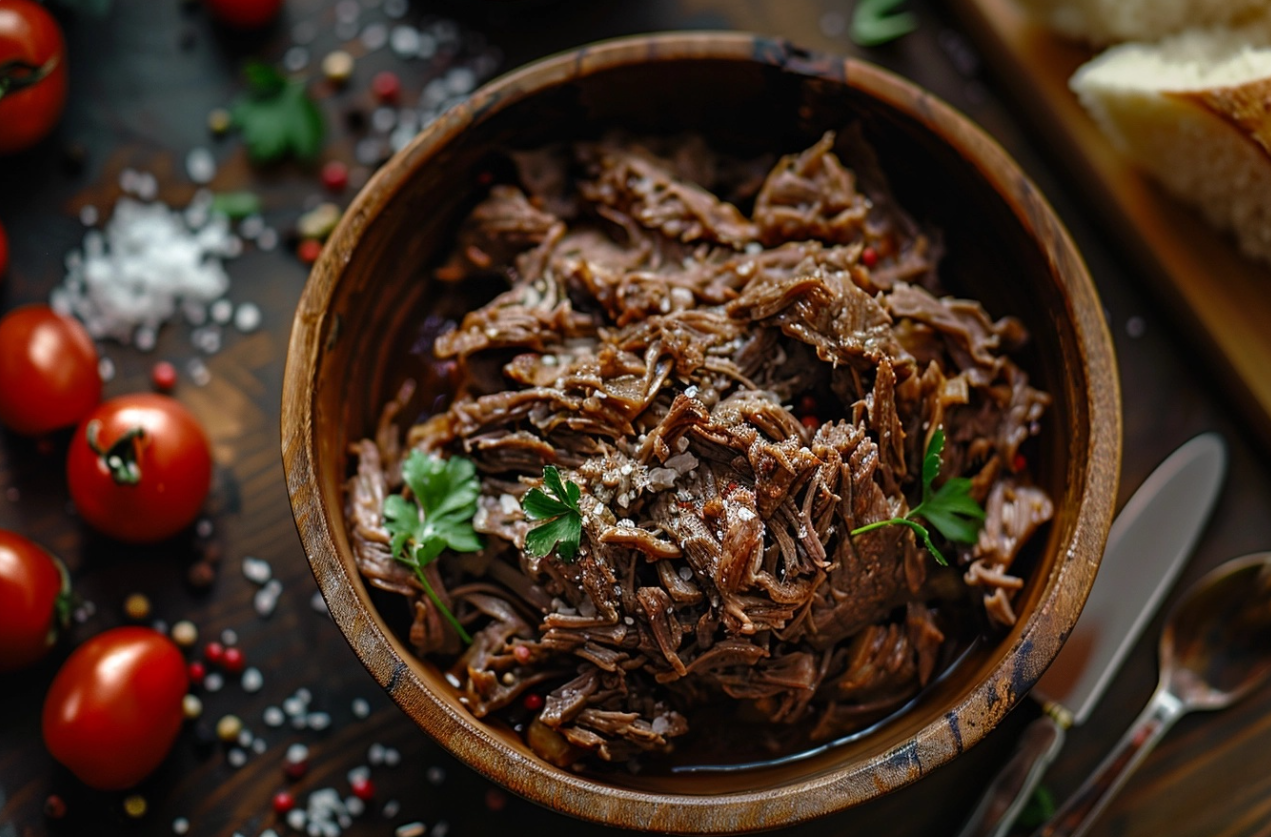
Dietary Adaptations and Health Considerations
Health Benefits of Beef
Shredded beef is a nutrient-dense protein source, offering essential vitamins and minerals. It furnishes iron, an essential element vital for the conveyance of oxygen within the bloodstream. Additionally, beef contains zinc, which supports the immune system, and B vitamins that aid in energy production and brain function. Including shredded beef in your diet can contribute to muscle growth and overall health. Health Benefits of Beef
Dietary Restrictions
For those following specific dietary guidelines, shredded beef can be adapted to meet various needs. For a lower-fat option, choose lean cuts like sirloin or round roast. These selections boast reduced marbling yet retain tenderness potential when prepared with precision. To reduce sodium intake, use homemade seasoning mixes without added salt.
Vegetarian and vegan alternatives to shredded beef include jackfruit and tofu. Jackfruit, with its fibrous texture, can mimic the consistency of shredded beef when cooked with the right spices. Tofu, particularly extra-firm, can be shredded and flavored to provide a satisfying meat substitute.
Allergy Considerations
When preparing shredded beef for those with food allergies, be mindful of common allergens in recipes. For instance, gluten-free individuals should avoid soy sauce containing wheat. Opt for gluten-free tamari instead. Always check seasoning blends for hidden allergens and choose organic or allergen-free options when necessary.
In conclusion, shredded beef can fit into various dietary plans and provide significant health benefits. By selecting the right cuts and being mindful of dietary restrictions, you can enjoy this versatile ingredient in a healthy and delicious way. Adaptations like using leaner cuts or plant-based substitutes ensure that everyone can enjoy shredded beef, regardless of their dietary needs.
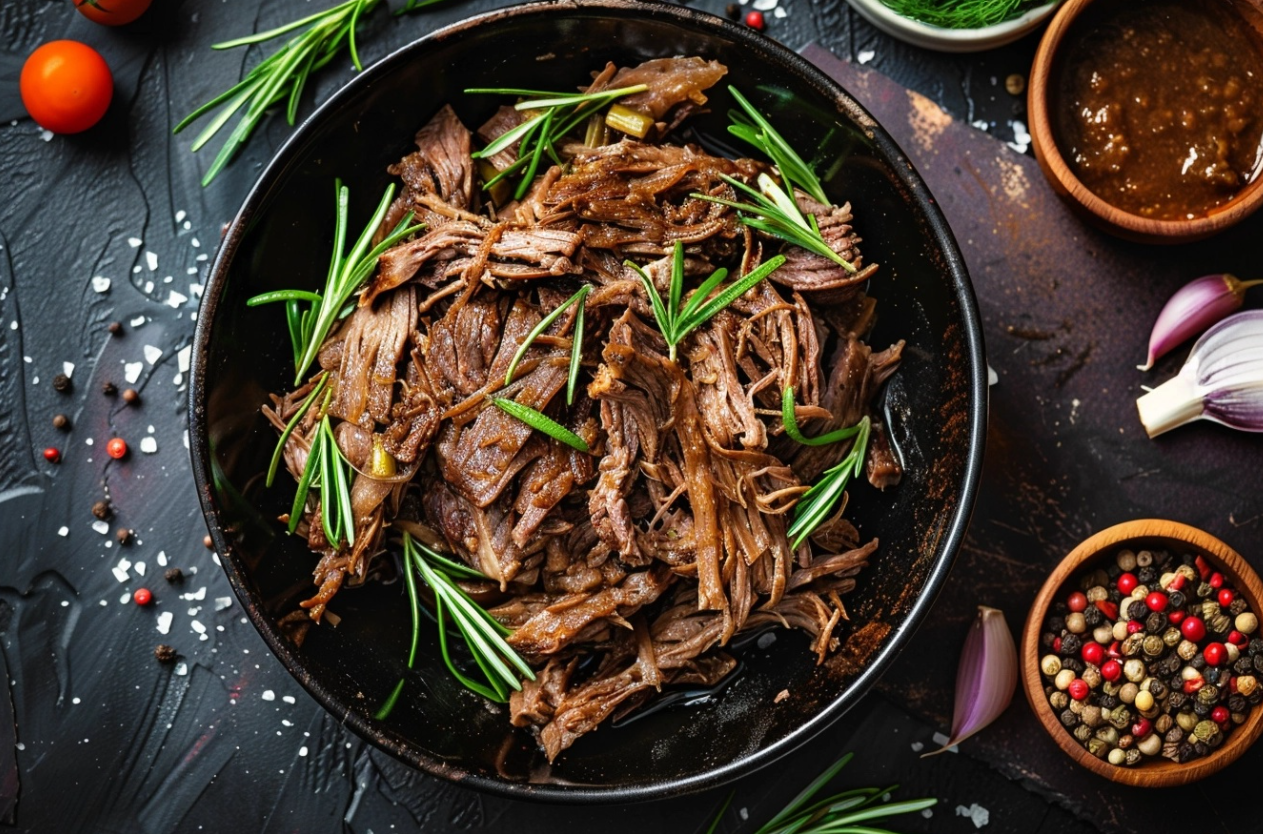
Frequently Asked Questions
What meat is best for shredded beef?
The best meat for shredded beef is typically a cut that becomes tender with slow cooking. Chuck roast and brisket are popular choices due to their marbling, which breaks down and adds flavor during cooking. These cuts ensure the beef is juicy and easy to shred.
What beef is used for shredding?
Chuck roast is the most commonly used beef for shredding. It’s well-marbled, which means it has a good amount of fat that melts during cooking, keeping the meat moist. Brisket and rump roast are also excellent options for making shredded beef.
Should you shred beef hot or cold?
For the best results, you should shred beef while it’s hot. Warm beef is easier to pull apart and retains more moisture. If you try to shred cold beef, it can be tougher and less pliable, making the process more difficult and less effective.
Why is my shredded beef dry?
Dry shredded beef can result from several factors. Excessive cooking often leads to this issue, as it has the tendency to diminish the meat’s inherent juices. Insufficient liquid during cooking can also lead to dryness. To prevent this, ensure you cook the beef with enough broth or water, and monitor the cooking time closely.
In conclusion, choosing the right cut of beef and proper cooking techniques are essential for making perfect shredded beef. Using well-marbled cuts like chuck roast, shredding the meat while it’s hot, and maintaining adequate moisture during cooking can help you avoid common pitfalls like dry beef. These tips will ensure your shredded beef is always tender and flavorful.
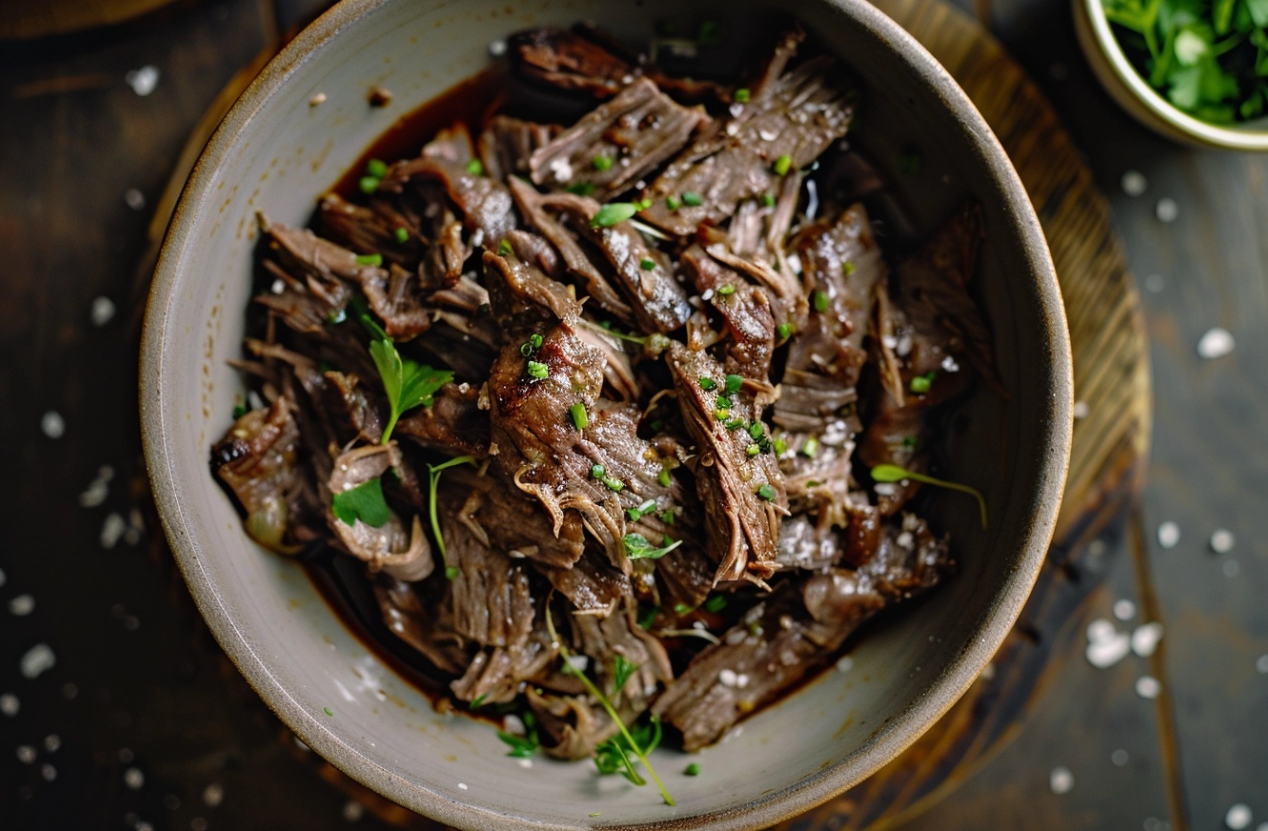
Conclusion
Versatility and Flavor
Mastering shredded beef recipes enhances your culinary skills and adds versatility to your meals. From basic preparations to advanced techniques, shredded beef offers a world of flavors and uses. Effective techniques for storing and reheating guarantee the preservation of your beef’s tenderness and flavor, even when relished as leftovers.
Practical Tips
Answering common questions about shredded beef helps in perfecting your cooking process. Selecting the right cuts, maintaining proper moisture, and shredding the beef while it’s hot are essential tips for success. These practices ensure that your shredded beef is always juicy and flavorful.
Endless Possibilities
In conclusion, shredded beef recipes are a valuable addition to any kitchen, offering flexibility, rich taste, and adaptability. Through the inclusion of shredded beef in your culinary endeavors, you unlock a plethora of delectable meal options tailored to diverse palates and dietary needs. Explore the diverse possibilities of shredded beef and enjoy its endless culinary potential.


